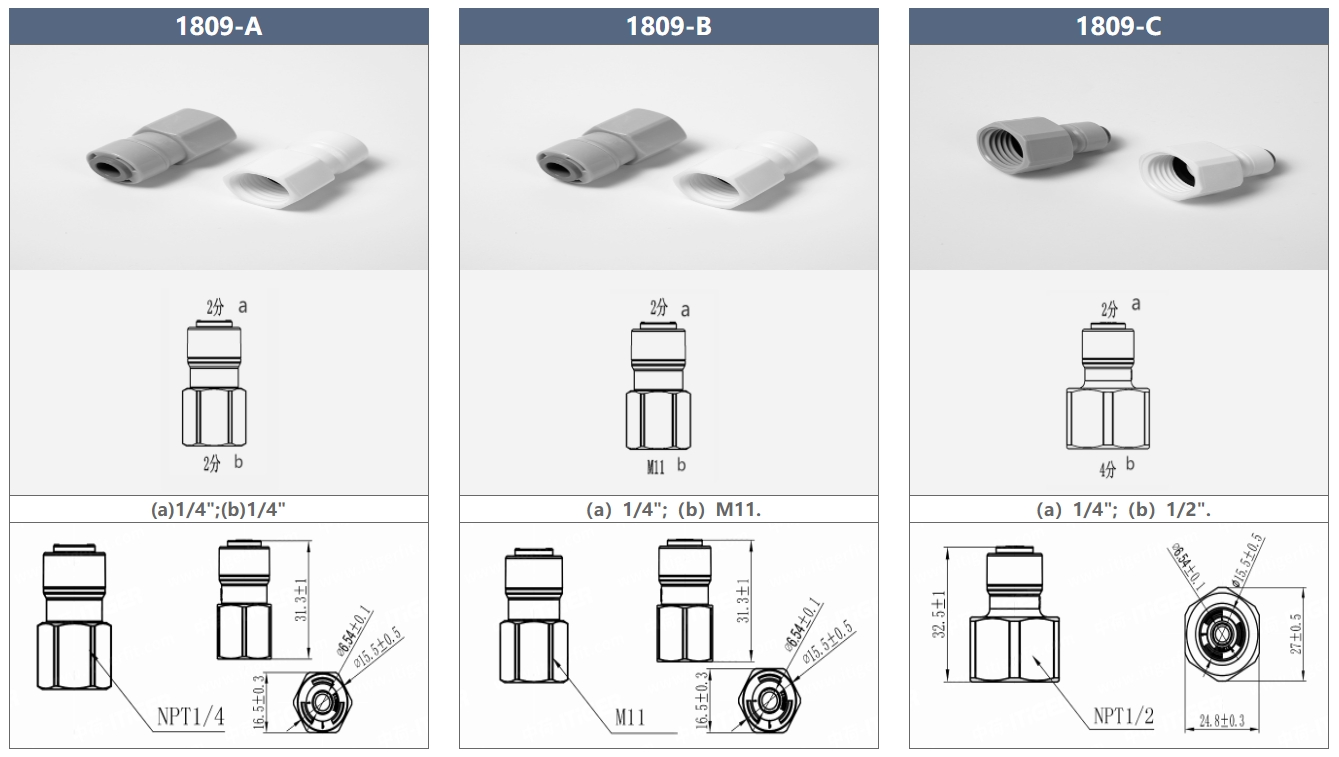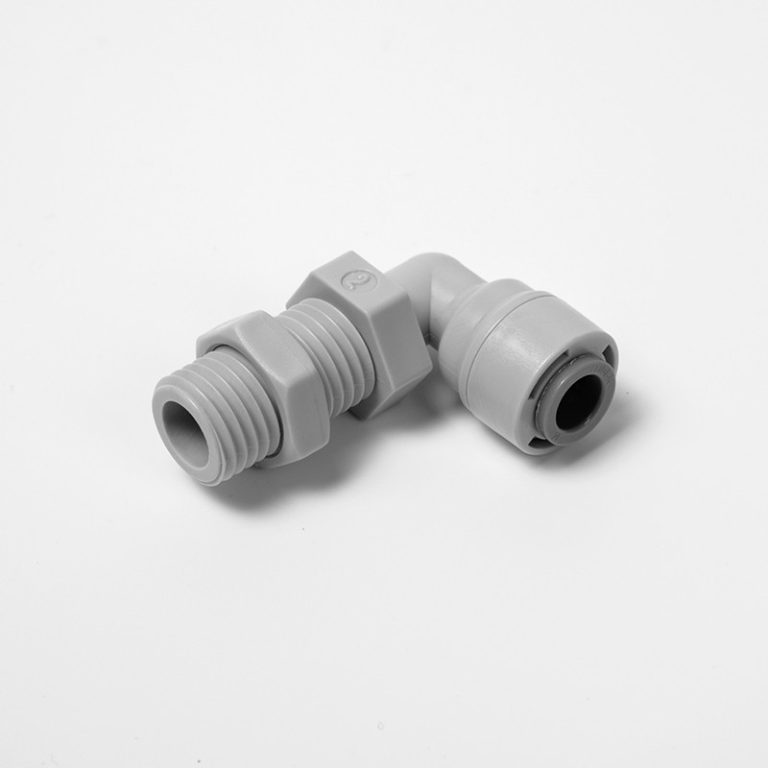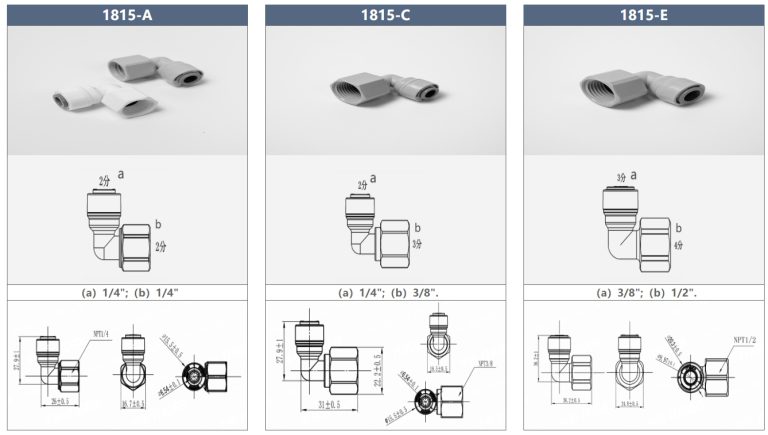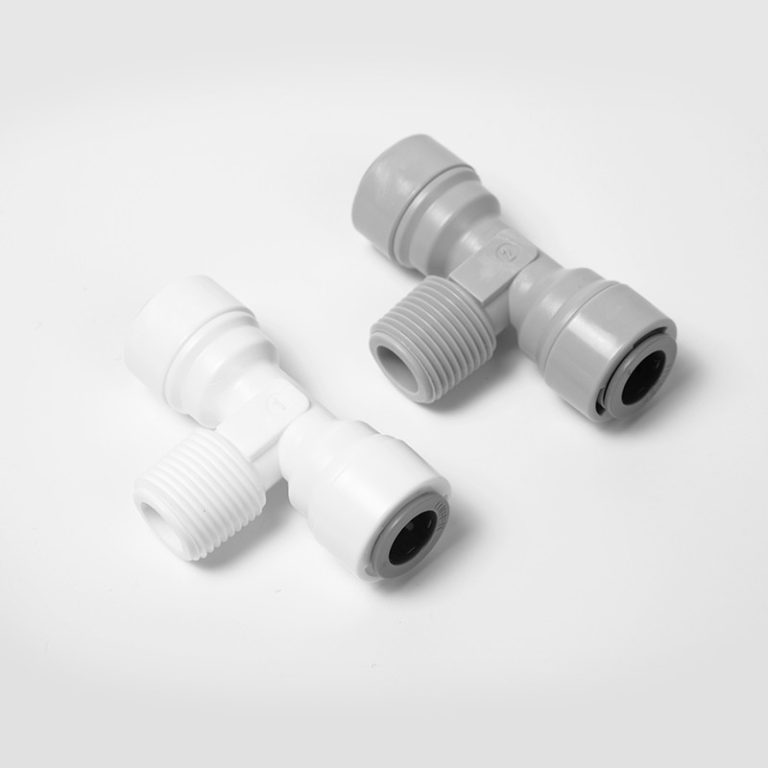Table of Contents
Pros and Cons of Plastic Push Fittings in Plumbing Systems
Plastic push fittings have become increasingly popular in plumbing systems due to their ease of use and quick installation process. These fittings are designed to connect pipes without the need for soldering, gluing, or other traditional methods of joining pipes together. Instead, plastic push fittings utilize a simple push-to-connect mechanism that allows for a secure and leak-free connection.
One of the main advantages of plastic push fittings is their ease of installation. With traditional methods of joining pipes, such as soldering or gluing, a certain level of skill and expertise is required. However, with plastic push fittings, even those with little to no plumbing experience can easily connect pipes together. This can save both time and money on installation costs, as there is no need to hire a professional plumber for the job.

Additionally, plastic push fittings are reusable, making them a cost-effective option for plumbing systems. If a mistake is made during installation or if pipes need to be reconfigured, the fittings can simply be disconnected and reused. This eliminates the need to purchase new fittings each time changes need to be made, saving money in the long run.
Another benefit of plastic push fittings is their versatility. These fittings can be used with a variety of pipe materials, including copper, PEX, and CPVC. This makes them a versatile option for a wide range of plumbing applications. Additionally, plastic push fittings come in a variety of sizes and configurations, allowing for customization to fit specific plumbing needs.
| Model | Tube(a) | Stem(b) |
|---|---|---|
| 1801-A | 1/4 | 1/4 |
| 1801-C | 1/4 | 3/8 |
Despite their many advantages, plastic push fittings do have some drawbacks. One of the main concerns with plastic push fittings is their durability. While these fittings are designed to provide a secure connection, they may not be as durable as traditional methods of joining pipes. Over time, plastic push fittings may become weakened or damaged, leading to leaks or other issues.
Additionally, plastic push fittings may not be suitable for all plumbing applications. In situations where high temperatures or pressures are present, plastic push fittings may not be able to withstand the conditions. It is important to carefully consider the specific requirements of the plumbing system before choosing to use plastic push fittings.
In conclusion, plastic push fittings offer a convenient and cost-effective option for connecting pipes in plumbing systems. Their ease of installation, reusability, and versatility make them a popular choice for many homeowners and contractors. However, it is important to consider the durability and suitability of plastic push fittings for specific plumbing applications. By weighing the pros and cons of plastic push fittings, individuals can make an informed decision on whether these fittings are the right choice for their plumbing needs.
Step-by-Step Guide on Installing Plastic Push Fittings in DIY Projects
Plastic push fittings are a popular choice for DIY projects due to their ease of use and versatility. These fittings are designed to connect pipes or tubing without the need for any special tools or soldering. Instead, they rely on a simple push-to-connect mechanism that makes installation quick and hassle-free.
To understand how plastic push fittings work, it’s important to first grasp the basic components of these fittings. The main parts of a plastic push fitting include the body, the collet, and the O-ring. The body is typically made of durable plastic and houses the collet and O-ring. The collet is a ring with teeth that grip onto the pipe or tubing, while the O-ring provides a watertight seal.
When installing a plastic push fitting, the first step is to cut the pipe or tubing to the desired length using a pipe cutter or a hacksaw. It’s important to ensure that the cut is clean and straight to prevent any leaks. Once the pipe is cut, it’s crucial to remove any burrs or rough edges using a deburring tool or sandpaper.
| Model | Tube(a) | Stem(b) |
|---|---|---|
| 1801-A | 1/4 | 1/4 |
| 1801-C | 1/4 | 3/39 |
Next, insert the pipe into the fitting until it reaches the bottom. The collet inside the fitting will grip onto the pipe, securing it in place. It’s important to push the pipe in firmly to ensure a tight seal. To remove the pipe, simply push down on the collet while pulling the pipe out.
One of the key advantages of plastic push fittings is their versatility. These fittings can be used with a variety of pipe materials, including copper, PEX, and CPVC. This makes them ideal for a wide range of DIY projects, from plumbing repairs to irrigation systems.
Another benefit of plastic push fittings is their reliability. When installed correctly, these fittings provide a secure and leak-free connection that can withstand high water pressure. This makes them a popular choice for both professional plumbers and DIY enthusiasts alike.
In addition to their ease of installation and reliability, plastic push fittings are also reusable. If you need to make changes to your plumbing system, simply push down on the collet to release the pipe and reposition it as needed. This makes plastic push fittings a cost-effective and convenient option for DIY projects.

Overall, plastic push fittings are a versatile and reliable choice for DIY projects. Their simple push-to-connect mechanism makes installation quick and easy, while their ability to work with a variety of pipe materials adds to their appeal. Whether you’re a seasoned DIY enthusiast or a first-time plumber, plastic push fittings are a great option for your next project.







